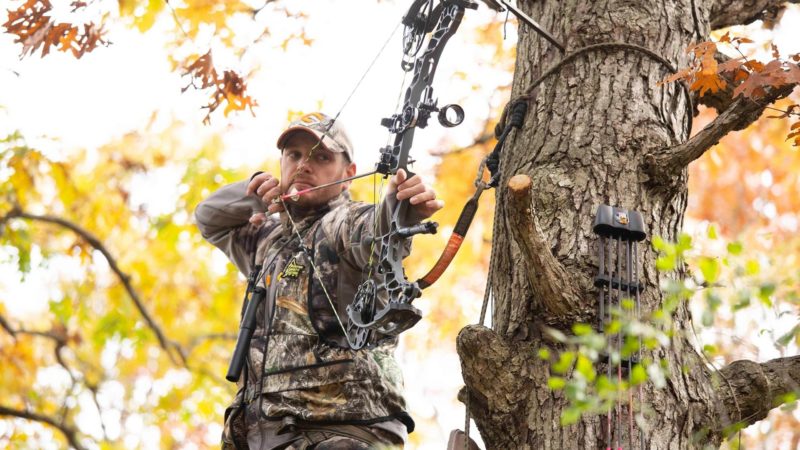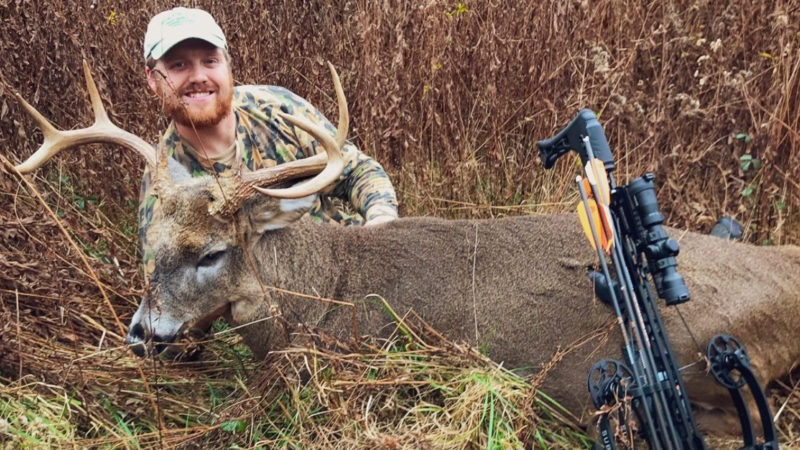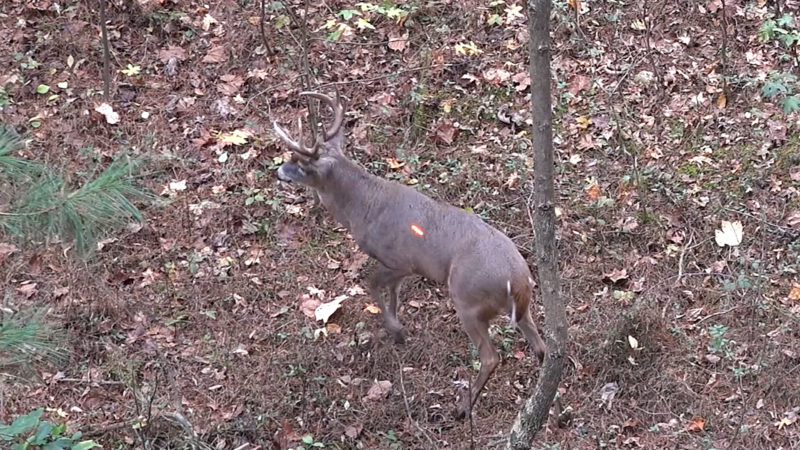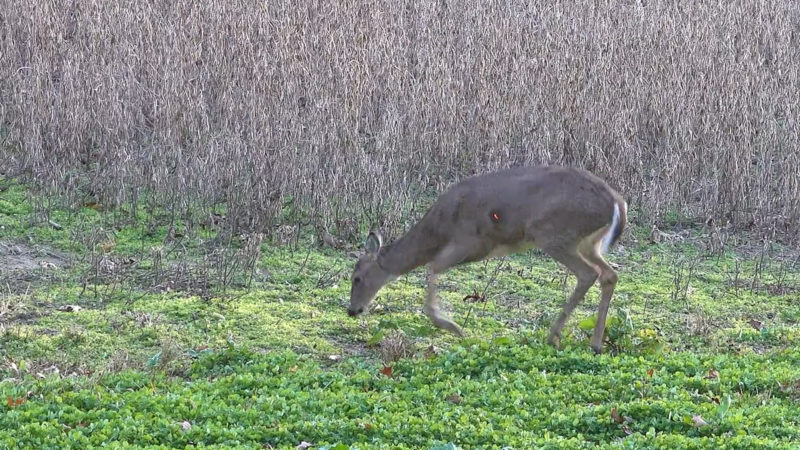As bowhunters, we hope for the best possible result of a hunt. A clean ethical kill. Many of us practice and try to perfect our abilities before going into the woods, as we should.
This archery season was a rough one for me. I saw a lot of deer, but I missed opportunities because of mistakes made at the wrong time. My season ended with me hitting a respectable buck in the liver on a 30-yard shot.

It was mid-rut in Pennsylvania. On the way into my stand in the evening, I spotted a large bodied eight-point. He seemed to think I was a deer walking and was headed my way. I ended up shooting him at 30 yards. I didn’t video the hunt, so I don’t know if this buck reacted or if I pulled the shot to the left. I saw the arrow land eight inches from its intended mark, close to the back of the rib cage. He ran 30 yards, I doe bleated to get him to stop, which he did. I tried to load another arrow. I saw the exit wound was farther back than the entry and immediately realized he had been facing my direction more than I thought when I released the arrow.
Trying to keep him in the area, I snort-wheezed as I reset the release in my D loop. I would never take a 60-yard shot if an animal wasn’t wounded, but this was a different situation. Before I could come to full draw, he staggered uphill and then ran with his tail pinned between his legs into the brush and disappeared.

Inside, a great sinking feeling came. I felt sick, but not hopeless. There were a number of hours left before dark, and I knew I could let him lay down and hopefully expire.
Several hours later my brother and I found half a cup of blood where he had stopped, a small amount rubbed on goldenrod where he went into the brush, and my arrow covered in dark red blood. Nothing else.
Choices. It’s the way that we operate in life. Some are good and some are bad. We learn from our choices regardless. Every choice we make has some level of risk. I chose to play it safe, and wait the night. I did not want to bump the buck if he had bedded down and was still alive.
We came back the next morning and found him within an hour of searching. He was almost completely consumed by coyotes and had only run 140 yards.
This experience showed me how being a hunter is not actually about killing an animal. If that is all we wanted to do we would be happy about putting an arrow in one and having a hard time finding it. Hunting is about the respectful harvesting of a creature that we are very responsible for.
I know many other hunters have had the same experience. It’s hard to deal with.
So, to make this post practical, here are some things that I learned, during the process and after, that may help another hunter going through the same situation.

In my situation, a snort-wheeze was not the right call to use after hitting that buck. I didn’t think it through. I do not recommend using a threatening call to a wounded animal. I should have remained quiet after getting him to stop. Keeping a wounded deer calm and unalerted is important. The doe bleat worked great to calm him down a bit and get him to stop. I would try it again if I was in that situation, but not a snort-wheeze.
Even on a lethal hit, a deer may not bleed much. The point of entry was about centerline vertically and about eight inches behind the shoulder. This should have brought enough blood to track, but there was none after 60 yards.
Tips on Recovering a Liver Hit Deer
This is some general knowledge I have learned about deer, its liver, and recovery after a liver shot.
1) Basics of a deer’s cardiovascular system in relation to its liver.
A deer walks around with about a gallon of blood in its cardiovascular system. In order for a deer to die, it needs to lose about a third of its blood. This comes out to about one and a half quarts. The liver contains roughly a pint of blood at a given time. This means if you center punch that liver the deer will die in a few minutes from blood loss because of the amount of blood circulating through the organ. There are main arteries that go into the liver as well that you may cut on impact which could lead to a very quick end for the deer.
Check out Bowhunting.com’s Shot Tracker tool for a better look at a deer’s anatomy, vital organs, and a few video examples of the liver shot.

2) A liver hit is a lethal hit.
The liver hit is a highly lethal hit. The deer will die. I knew this before, but never experienced it. If you hit a deer farther back in the ribcage but you have dark red blood, you likely have made a lethal shot. A mature whitetail will expire within a few hours depending on the severity of the hit.

3) What do deer act like on a liver hit?
When I shoot a deer, I usually judge the quality of the hit by the reaction. If I see a mule kick, generally it means I made a good double lung or heart shot. Deer will sometimes run, stop, and turn back, even on a good hit, if it doesn’t know what has happened. I have seen this multiple times.
In my situation, there was no kick. The buck’s tail was pinned between his legs after the shot.
I did not see him hunch up and look sick, but this is common with a liver shot.
The deer may run a short distance, stand for a while looking sick, and then walk away hunched up and bristled. A liver-hit deer generally will not go very far before bedding down (usually within 200 yards if you do not spook it).
4) Should you wait to track a liver hit deer?
Yes. The deer will likely have expired earlier, but to be safe a 4-8 hour wait is recommended.
I chose to leave my deer overnight for one reason: After waiting in the tree, I started tracking and found no blood past the point I had last seen him. Not even a drop. If I knew the direction he had gone after entering the brush, I would have continued tracking him. However, the trails in the area he went into were packed with tracks, and I couldn’t distinguish his tracks from others.

5) The risk of leaving a deer overnight is predation.
If you are unable to find blood and decide to wait until morning you risk losing the meat. Unless temperatures are above 45 degrees, the risk of meat spoiling is low. Predation is the highest risk here.
6) How to keep predators off a deer you leave overnight.
I recently learned to leave a human scent-soaked garment at the location of the last blood. I was taught this by an experienced bowhunter that has been part of over 200 deer recoveries. Leaving a lot of human scent in the area will help deter most predators. Since he started doing this, he has never lost a deer overnight to predation.
Watch the hunt below for a look at the follow up on a tough recovery…
So, to summarize. A liver hit is lethal. The odds are in your favor to recover a liver-hit deer. Give an appropriate amount of time before beginning the track to keep from spooking a wounded animal.
If you leave your deer overnight, leave a garment with human scent on it at the last known location of the deer to help deter predators.
And finally, don’t do anything that will alert the deer or increase its adrenaline for a number of hours to allow ample time for the deer to expire.

 By
By 



